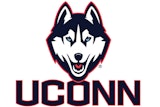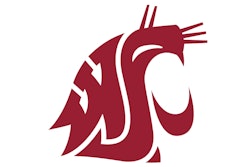
It has been more than 20 years since Hempfield High School in Landisville, Pa., installed its original outdoor track. Since its debut in 1992, the track has been resurfaced twice due to the heavy traffic it sees from high school athletes, physical education classes, youth sports participants and community events. Dan Forry, chief operating officer for the Hempfield School District, took note of the wear at the starting line and jump areas, and after talking with a few track surfacing professionals, made the decision to replace the existing surface.
"As we started looking at it, we started realizing the track had reached its life cycle," Forry says. "I told some vendors and suppliers that the track was more than 20 years old and they agreed that we had definitely gotten everything we could out of that track."

Last February, the Hempfield School Board approved a $1.2 million project to not only install a new synthetic turf field, but to replace the track surface, as well. Gaining the board's approval meant going beyond numbers and pictures. "Early on, I brought the school administrators out and just walked the track," says Forry. "Many hadn't seen it, and it really gave them perspective."
Maximizing athletes' performance while protecting them from injury requires acute attention to a track's surface. Athletics administrators and maintenance professionals must consider a number of variables to ensure maximum return on their substantial investment.
Maintenance
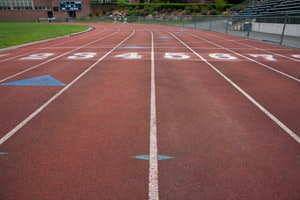 (Before & Afters Courtesy of Regupol) Click here to see more
(Before & Afters Courtesy of Regupol) Click here to see more
John Aten, vice president of sales and marketing for Lebanon, Pa.-based surfacing manufacturer Regupol America, agrees that there are a few signs your track needs replacing that might not be obvious to the untrained eye. "Most people will say, 'My lines don't look as bright, let's repaint them,' but nobody's ever looking that closely at the actual track surface, particularly at the edges and where the surface butts up against the drainage," Aten says.
 (Photos Courtesy of Hempfield School District) Click here to see more
(Photos Courtesy of Hempfield School District) Click here to see more
Aten recommends a comprehensive preventative maintenance plan to ensure maximum life for a track. Specifically, once a track is outside its warranty period, a qualified track builder or installer should periodically check the track, especially as it nears the end of its life cycle. "Running tracks, like turf fields, are big investments, and you want to have them periodically checked out," he says. "If you take care of a track and you fix small issues now, it's going to save you big-time in the long run."
How a track is used can also increase or decrease its life expectancy, and force schools to resurface their track much sooner than they should. "People think tracks are indestructible," Aten says. "They drive vehicles across the track or their athletes misuse them by wearing the wrong size spikes, for example. They become abusive, thinking the rubber surface can handle anything. As a result, they end up shortening the life span."
During practice and competition, the inside lanes can be used excessively, which can also accelerate the wear beyond certain high-traffic areas, such as the starting block area for the 100-meter dash and 110-meter high hurdles. Says Aten, "Not moving people off to an area to practice their starts will accelerate wear very, very fast."
Cost
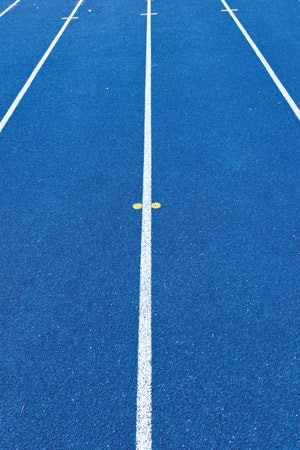
Only minor patchwork had been required on Franklin & Marshall's polyurethane track, installed by Regupol 23 years ago, but noting the track was starting to wear thin, director of grounds Ted Schmid and the college recently decided it was time to add a complete resurfacing lift. "I think the life expectancy was 10 to 15 years, so I was definitely surprised to get that longevity," says Schmid, who admits the lone motivating factor behind resurfacing was the thinning of the surface.
A key reason the track was able to withstand the harsh central Pennsylvania climate and surpass its life expectancy was the high quality of the original substrate under the track, but, again, greater longevity requires a larger initial investment.
"The old saying 'you get what you pay for' is pretty true," admits Aten. "You're not going to get 20 years out of a $50,000 track. What ends up happening is they become long-term $50,000 nightmares every four to five years."
Trends
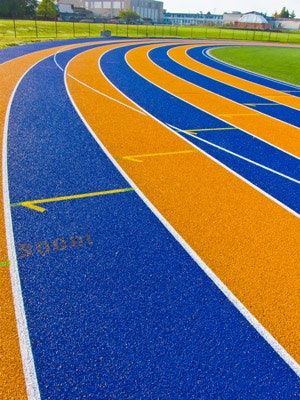
Another key shift has been toward prioritizing performance properties. The International Association of Athletics Federations (IAAF), for example, specifies the properties of the surface in terms of variables like force reduction. Gasparovic notes another trend: "What we've seen, especially the last five years, there's more concentration actually being put on testing surfaces. A lot more formulations have been geared toward passing these tests and creating a softer-type surface for the athlete."
Color customization is another track surfacing trend not likely to go away anytime soon. Gasparovic notes that there has been a big movement toward multicolor tracks, whether it's for exchange zones, alternating lanes or just as an aesthetic enticement. "You see on the highest collegiate levels that these multicolor tracks are being used as recruiting tools," says Gasparovic. "We're seeing customization more and more on the collegiate level, and the one-track-fits-all just doesn't seem to be the case anymore."
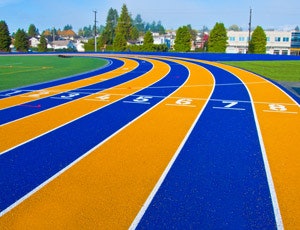
Perhaps the most encouraging trend, according to Aten, is the number of schools that are committed to going the distance with their tracks. "People are looking down the road at investments that will last them 20 years, because it's a burden and a cost, whether it's a public school or private school, to constantly maintain these facilities," he says.
The Hempfield School District is taking a similar forward-thinking approach with its track, which begins its resurfacing this month with a targeted completion by July — in time for the new school year. Rather than just do the track or the turf field, which was having seam issues, Forry opted to do everything at once while being cost-conscious. "When you look at the wear and tear and you see gaps or cracks, I can't afford to have anyone tripping, falling or getting hurt along those lines," Forry says. "If it's an every-20-years investment, then it's an every-20-years investment. We want to deliver safe facilities, and if you get to a point where someone does get injured, then clearly you've waited too long."
This article originally appeared in the May 2015 issue of Athletic Business with the title "Go the Distance"













